Chonon Bensho
Bio/CV
Available works
Chonon Bensho
Chonon Bensho
Chonon Bensho (Pucallpa, 1992) is a multimedia artist and poet from the Shipibo-Konibo People of the Peruvian Amazon. Her work involves both an exploration and a revitalization of the ancestral tradition of Kené, an artistic style of the Shipibo Konibo community, characterized by abstract patterns of intricate exactness that create an overall image of vibratory power.
The Kené designs are inspired by the visions generated by the ingestion of entheogenic plants, such as ayahuasca. These pattern visions are an essential aspect of healing rituals. Thus, the designs made on a material support are also said to have healing powers. Traditionally, “making Kené”, that is, painting, embroidering or weaving designs, is a feminine art inherited from mother to daughter, which uses materials derived from the Amazon forest and can be reproduced on the body, clothing, ceramics, wood, among other surfaces. Descended from a long lineage of female artists and visionary healers, Bensho learned the indigenous cosmology contained in Kené long before attending art school, from which she graduated in 2018, managing to merge her indigenous heritage and the tradition of Western Fine Arts in a unique formal universe.
The Kené designs are inspired by the visions generated by the ingestion of entheogenic plants, such as ayahuasca. These pattern visions are an essential aspect of healing rituals. Thus, the designs made on a material support are also said to have healing powers. Traditionally, “making Kené”, that is, painting, embroidering or weaving designs, is a feminine art inherited from mother to daughter, which uses materials derived from the Amazon forest and can be reproduced on the body, clothing, ceramics, wood, among other surfaces. Descended from a long lineage of female artists and visionary healers, Bensho learned the indigenous cosmology contained in Kené long before attending art school, from which she graduated in 2018, managing to merge her indigenous heritage and the tradition of Western Fine Arts in a unique formal universe.
Bio/CV
Chonon Bensho
Chonon Bensho (Pucallpa, 1992) is a multimedia artist and poet from the Shipibo-Konibo People of the Peruvian Amazon. Her work involves both an exploration and a revitalization of the ancestral tradition of Kené, an artistic style of the Shipibo Konibo community, characterized by abstract patterns of intricate exactness that create an overall image of vibratory power.
The Kené designs are inspired by the visions generated by the ingestion of entheogenic plants, such as ayahuasca. These pattern visions are an essential aspect of healing rituals. Thus, the designs made on a material support are also said to have healing powers. Traditionally, “making Kené”, that is, painting, embroidering or weaving designs, is a feminine art inherited from mother to daughter, which uses materials derived from the Amazon forest and can be reproduced on the body, clothing, ceramics, wood, among other surfaces. Descended from a long lineage of female artists and visionary healers, Bensho learned the indigenous cosmology contained in Kené long before attending art school, from which she graduated in 2018, managing to merge her indigenous heritage and the tradition of Western Fine Arts in a unique formal universe.
In Bensho’s hands, Kené becomes a tool to create large embroidered canvases that recreate images that elegantly and mystically express the harmonious coexistence between humans and the Amazonian environment. Thus, mythological beings, animals and plants are shaepd or traced through kene, functioning as a metaphor for the inseparability between all living beings in Shipibo Konibo culture.
Chonon Bensho won the 2022 Painting Award of the National Reserve Bank of Peru, being the first Indigenous woman to be recognized with the prize, considered the most important in Peru. Her most recent solo exhibitions include “Metsá Nete: the beautiful visionary world of Chonon Bensho” at the Alliance Française in Lima, Peru, curated by Christian Bendayán; and “A River, a Snake, a Map in the Sky”, in Basel, Switzerland, curated by Kateryna Botanova as part of the Culture Scapes Art Festival.
Her work is currently part of the MASP collection in Sao Paulo and MALI collection in Lima.
The Kené designs are inspired by the visions generated by the ingestion of entheogenic plants, such as ayahuasca. These pattern visions are an essential aspect of healing rituals. Thus, the designs made on a material support are also said to have healing powers. Traditionally, “making Kené”, that is, painting, embroidering or weaving designs, is a feminine art inherited from mother to daughter, which uses materials derived from the Amazon forest and can be reproduced on the body, clothing, ceramics, wood, among other surfaces. Descended from a long lineage of female artists and visionary healers, Bensho learned the indigenous cosmology contained in Kené long before attending art school, from which she graduated in 2018, managing to merge her indigenous heritage and the tradition of Western Fine Arts in a unique formal universe.
In Bensho’s hands, Kené becomes a tool to create large embroidered canvases that recreate images that elegantly and mystically express the harmonious coexistence between humans and the Amazonian environment. Thus, mythological beings, animals and plants are shaepd or traced through kene, functioning as a metaphor for the inseparability between all living beings in Shipibo Konibo culture.
Chonon Bensho won the 2022 Painting Award of the National Reserve Bank of Peru, being the first Indigenous woman to be recognized with the prize, considered the most important in Peru. Her most recent solo exhibitions include “Metsá Nete: the beautiful visionary world of Chonon Bensho” at the Alliance Française in Lima, Peru, curated by Christian Bendayán; and “A River, a Snake, a Map in the Sky”, in Basel, Switzerland, curated by Kateryna Botanova as part of the Culture Scapes Art Festival.
Her work is currently part of the MASP collection in Sao Paulo and MALI collection in Lima.
Available works
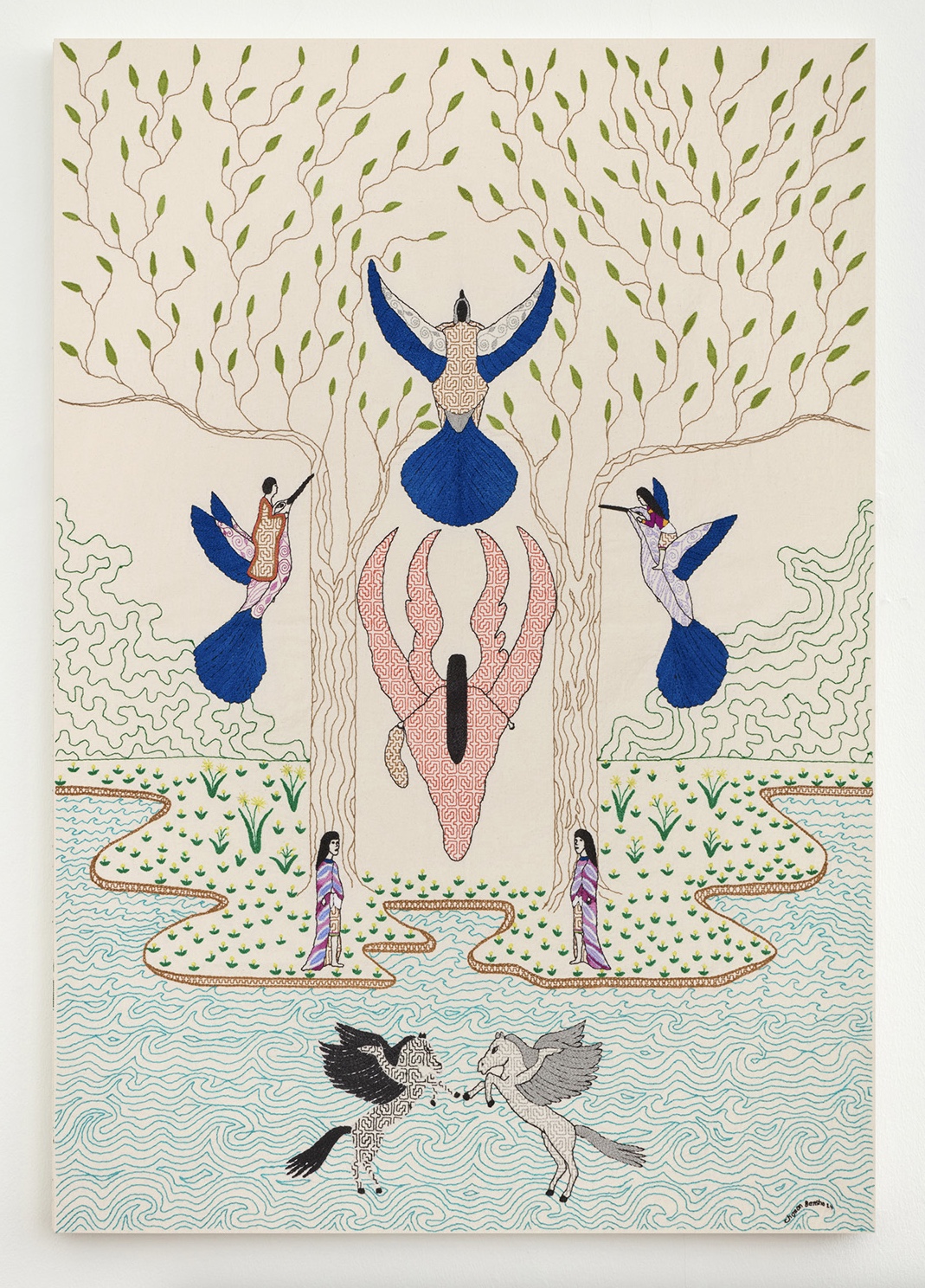
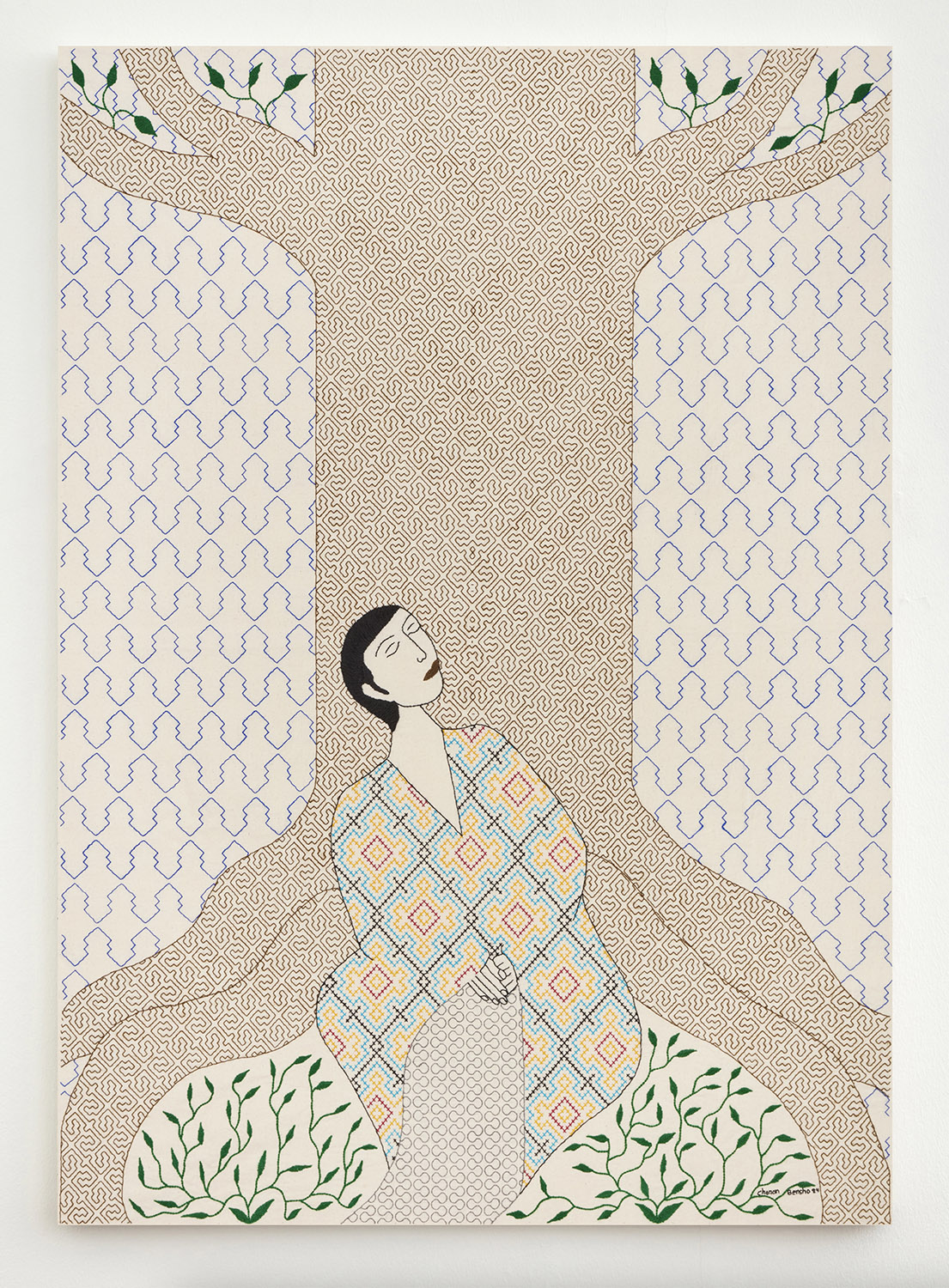
“Merayanin incanto (the stone with spiritual strength of the wise man)”, 2025
155 x 118.5 cm
Embroidery on fabric
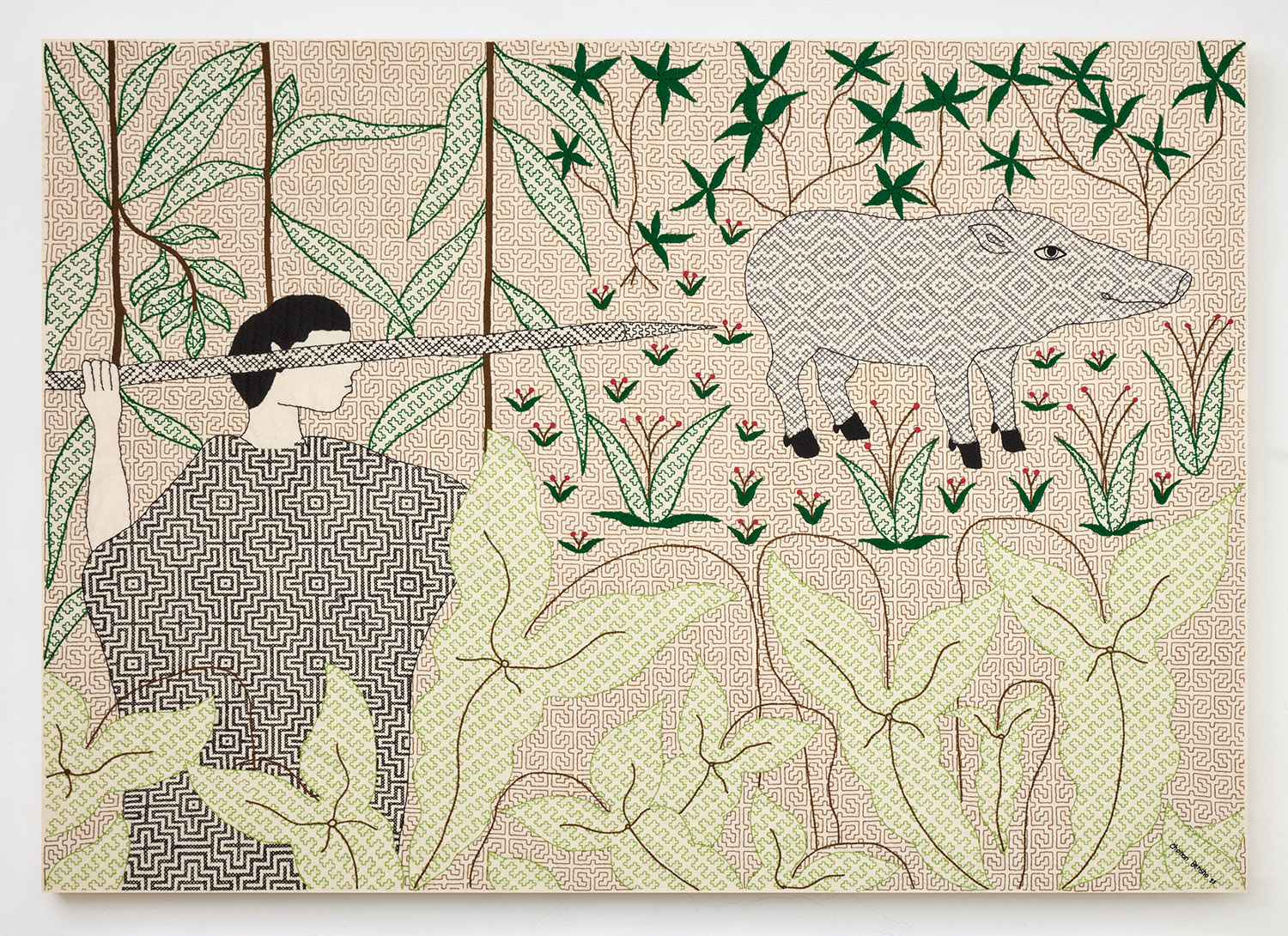
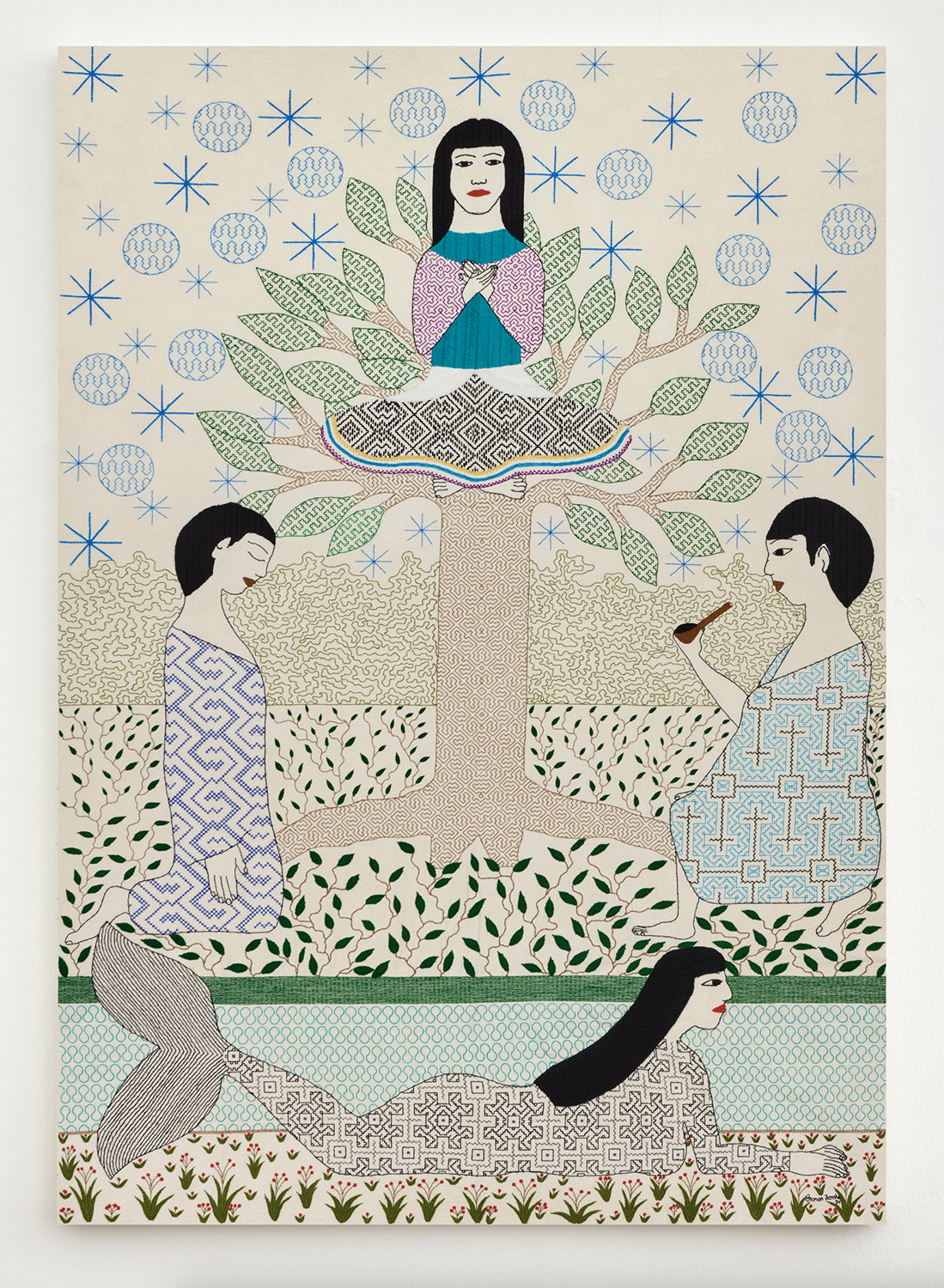
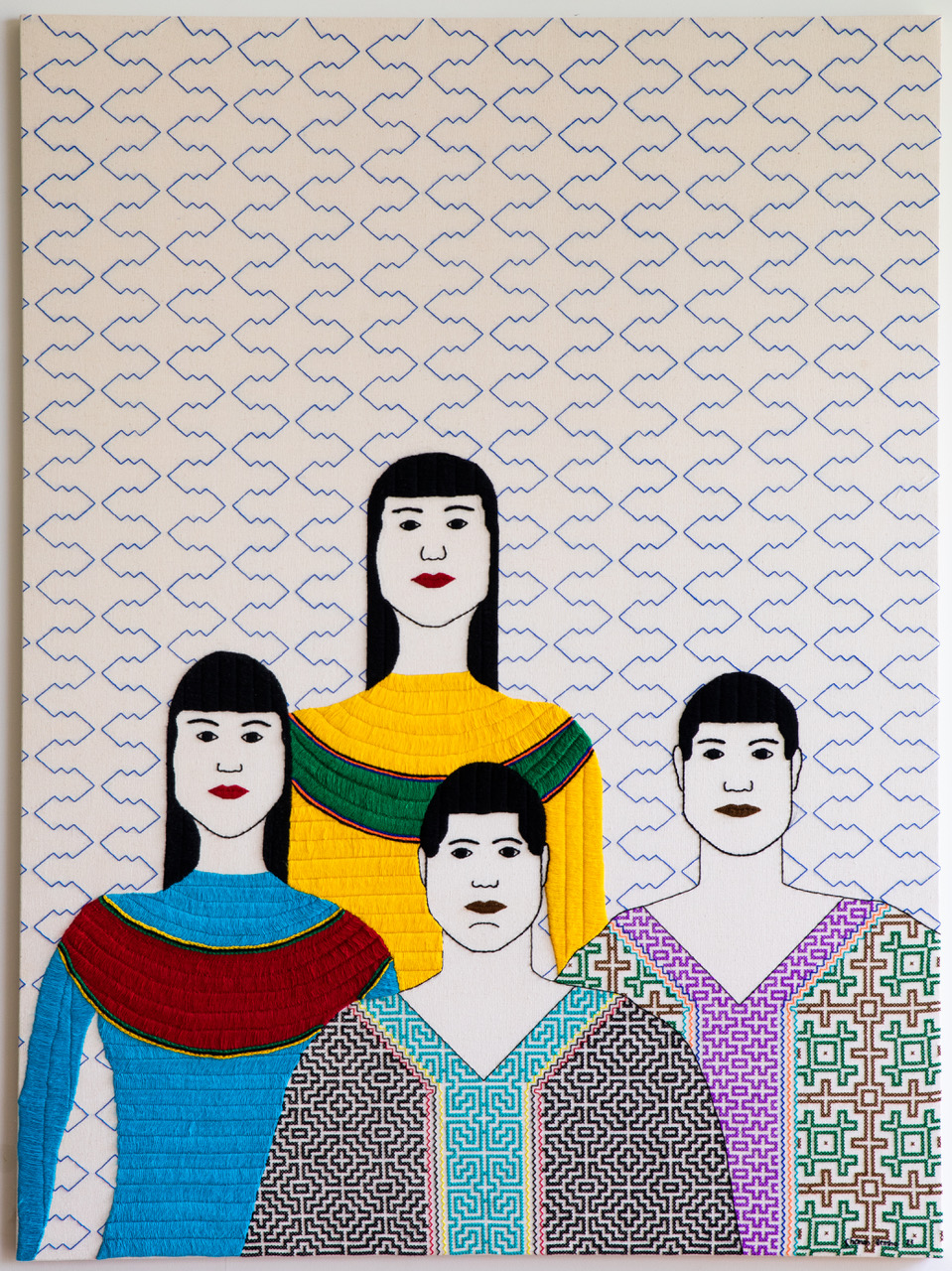
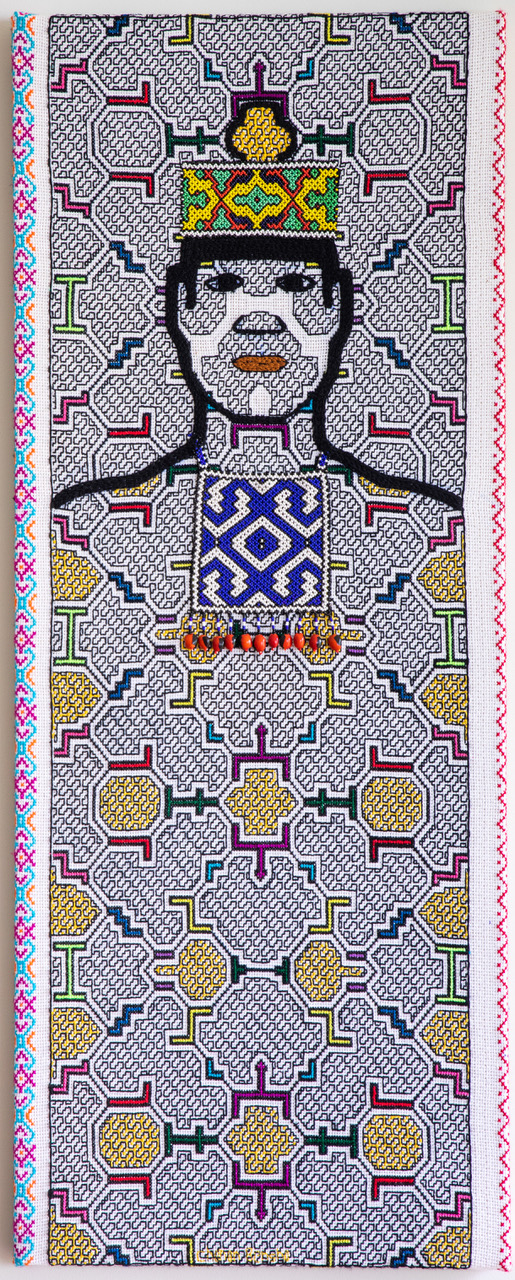
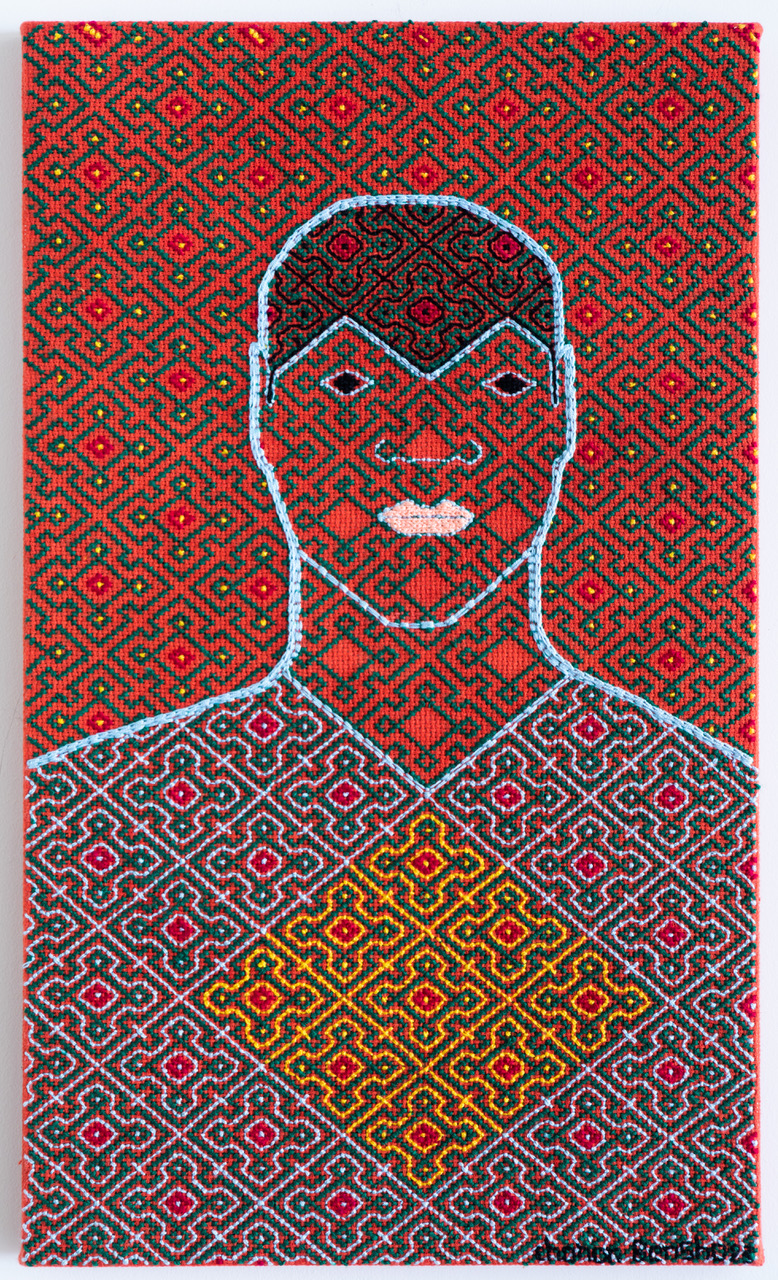
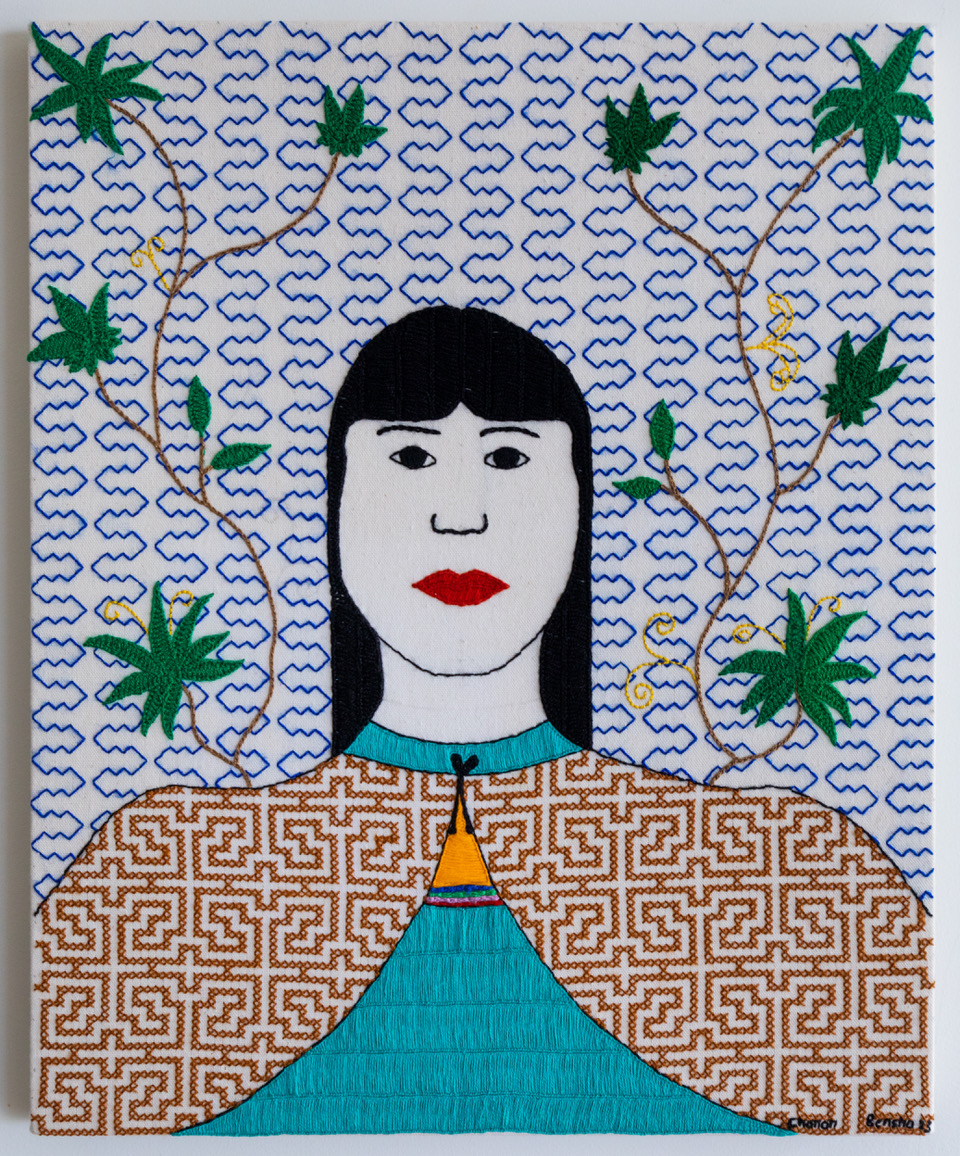
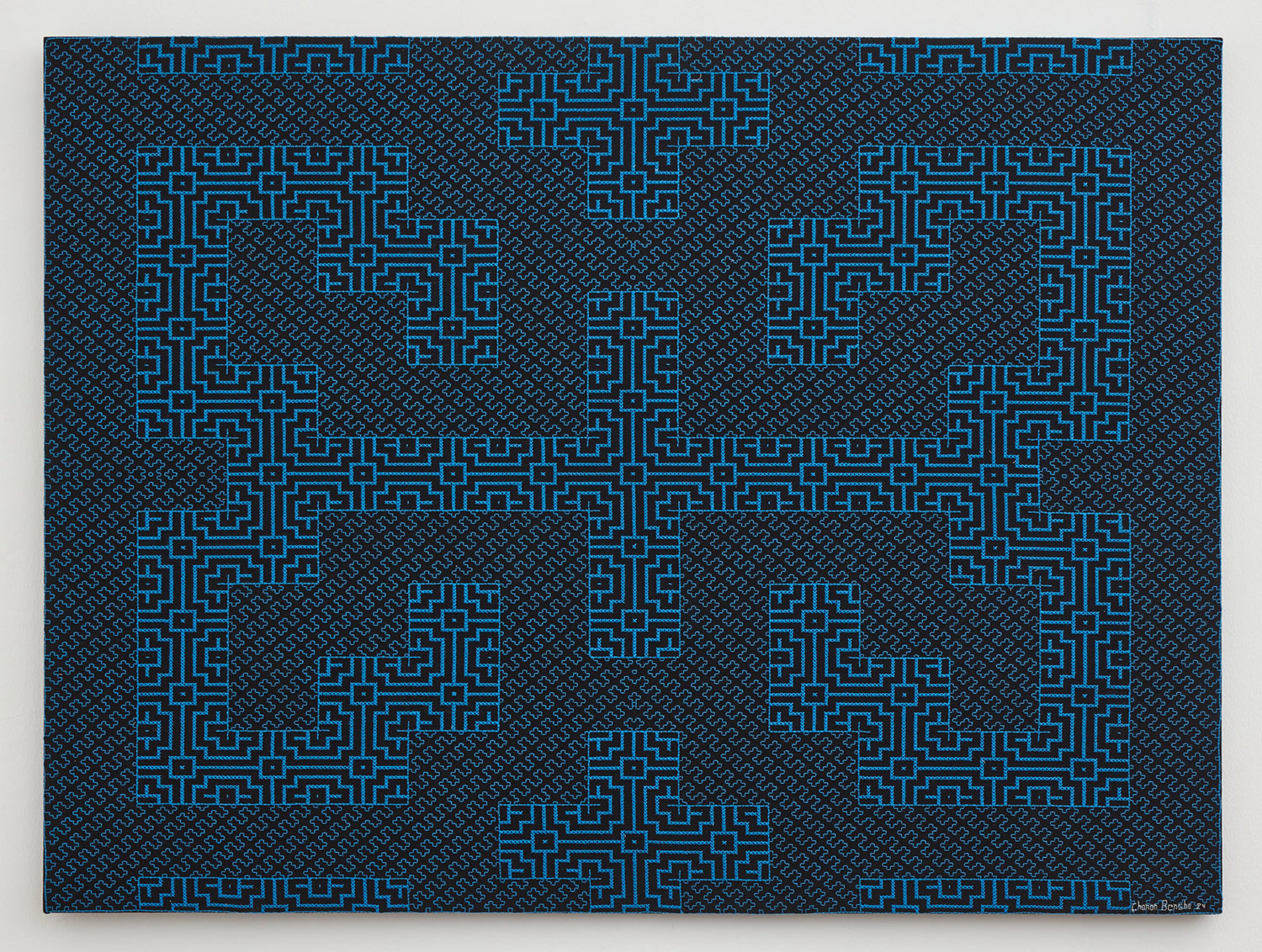
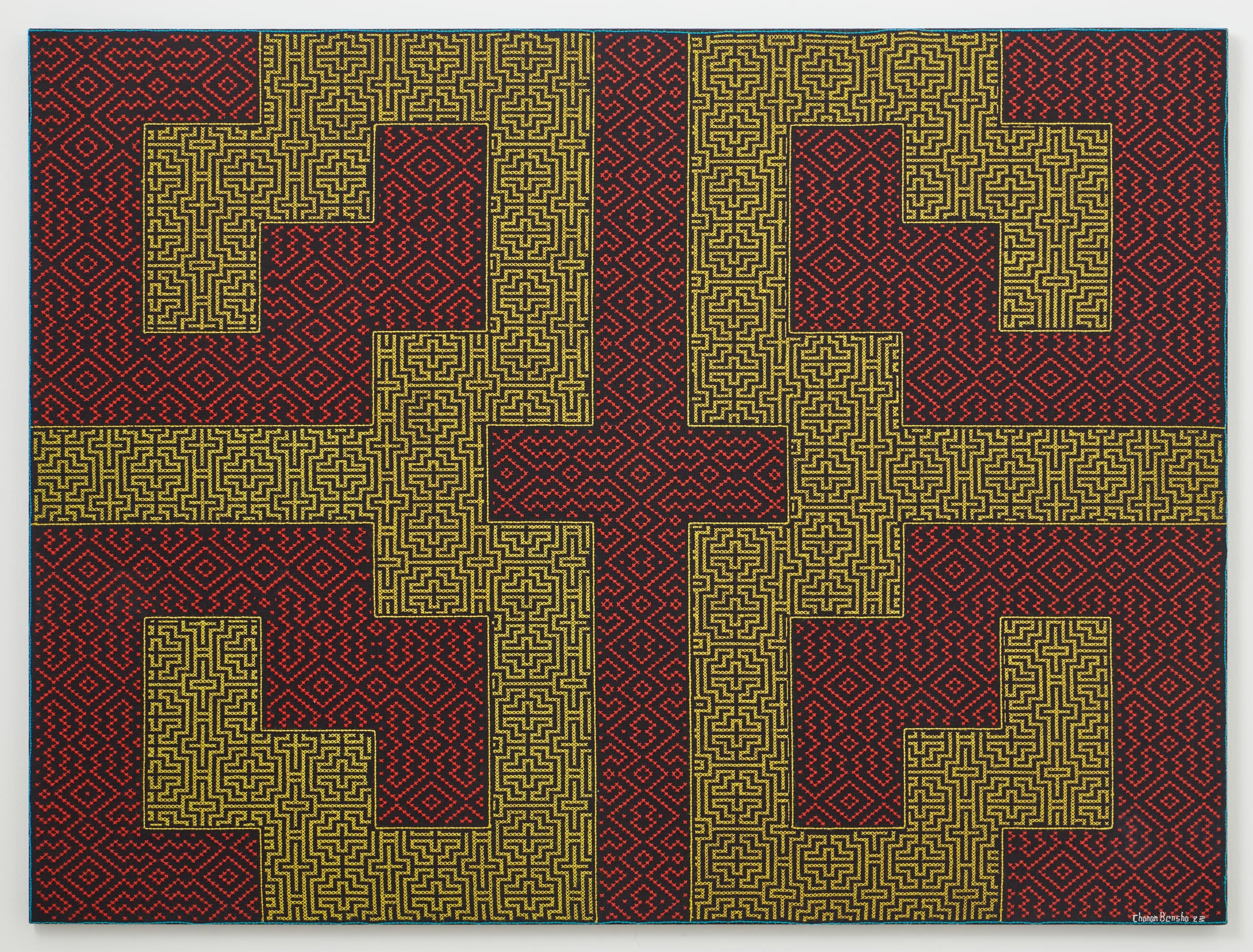
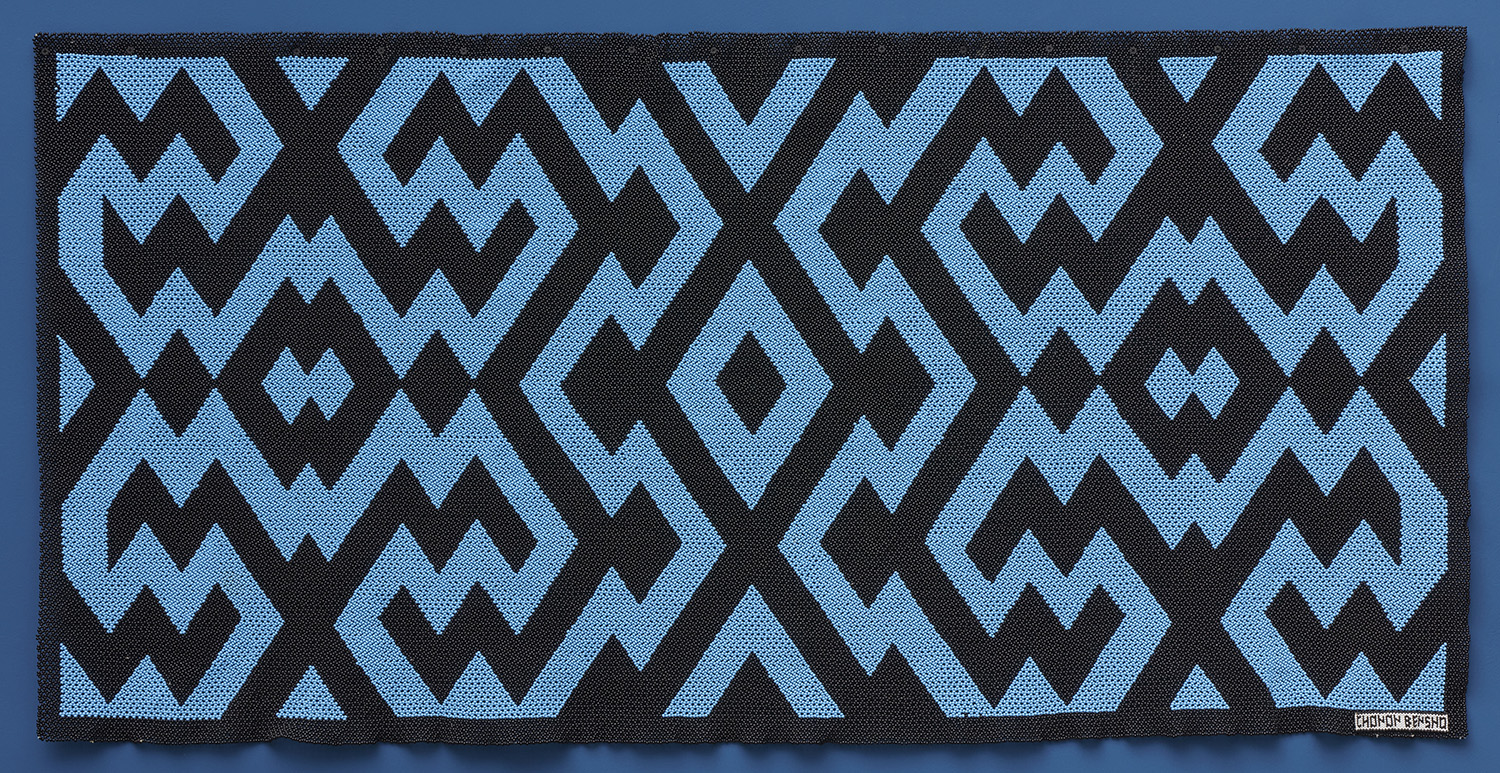
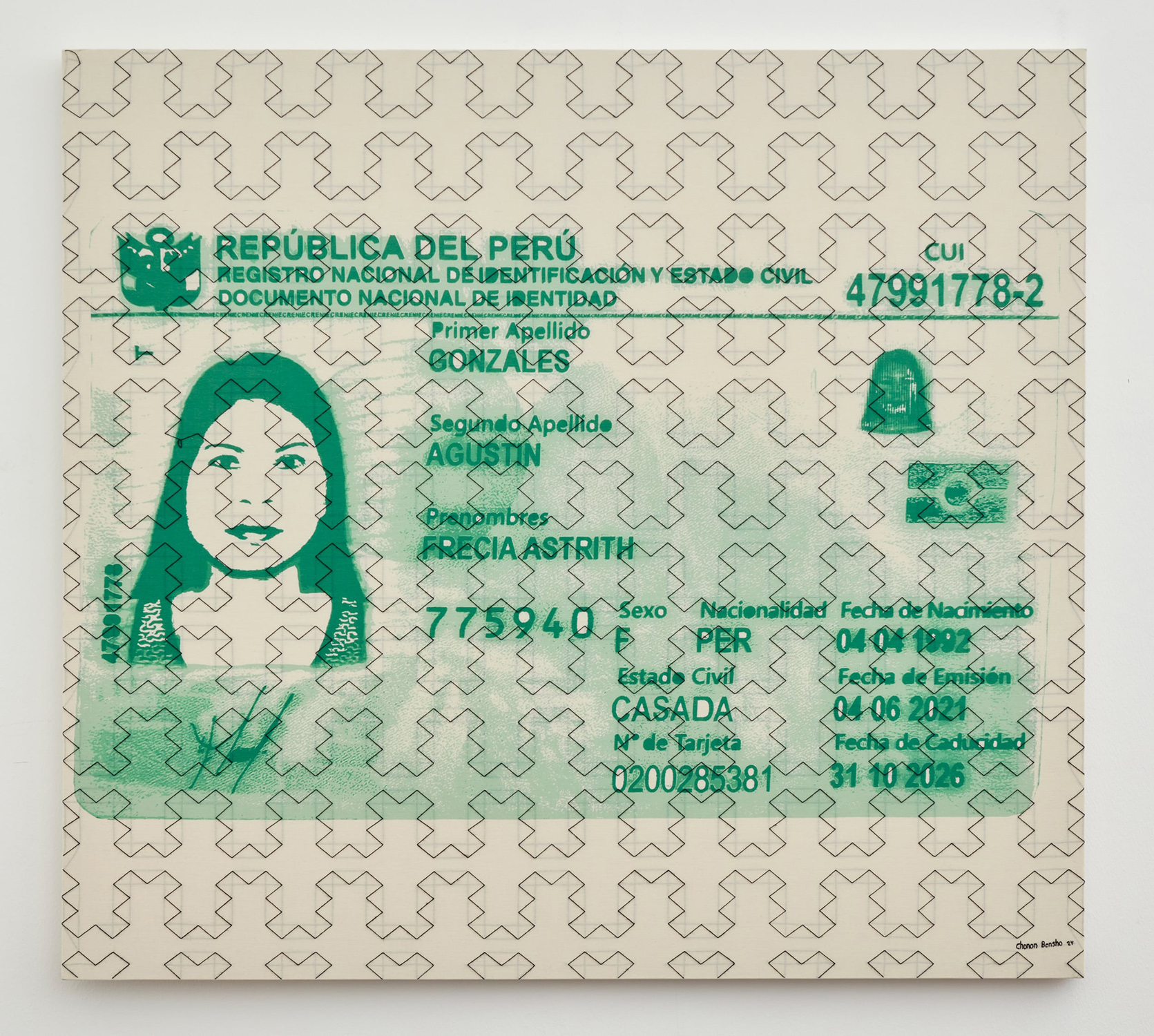
“Eariki (Green Document of Identity)”, 2024
137 x 151 cm
Screen prints on fabric with embroidery
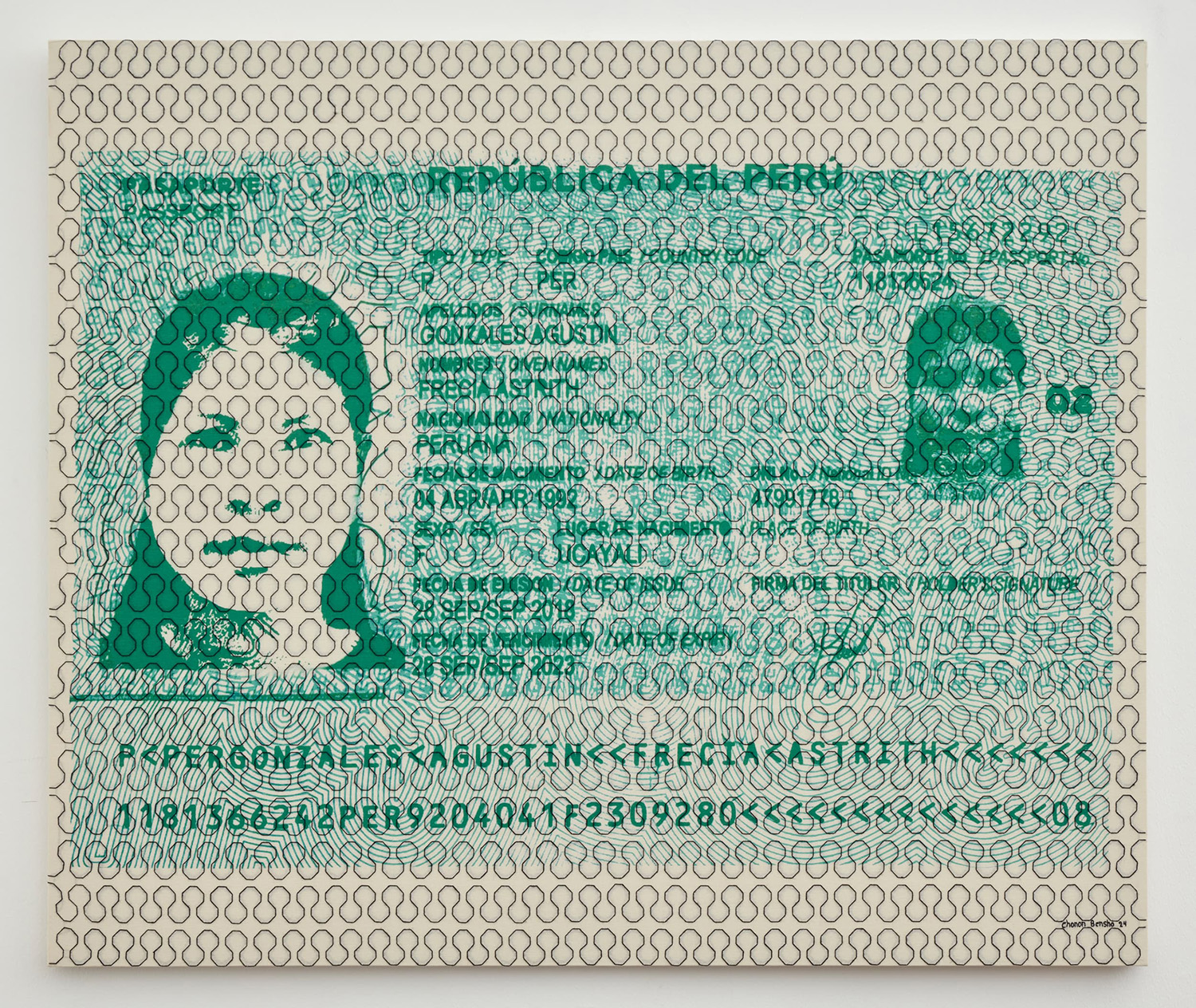
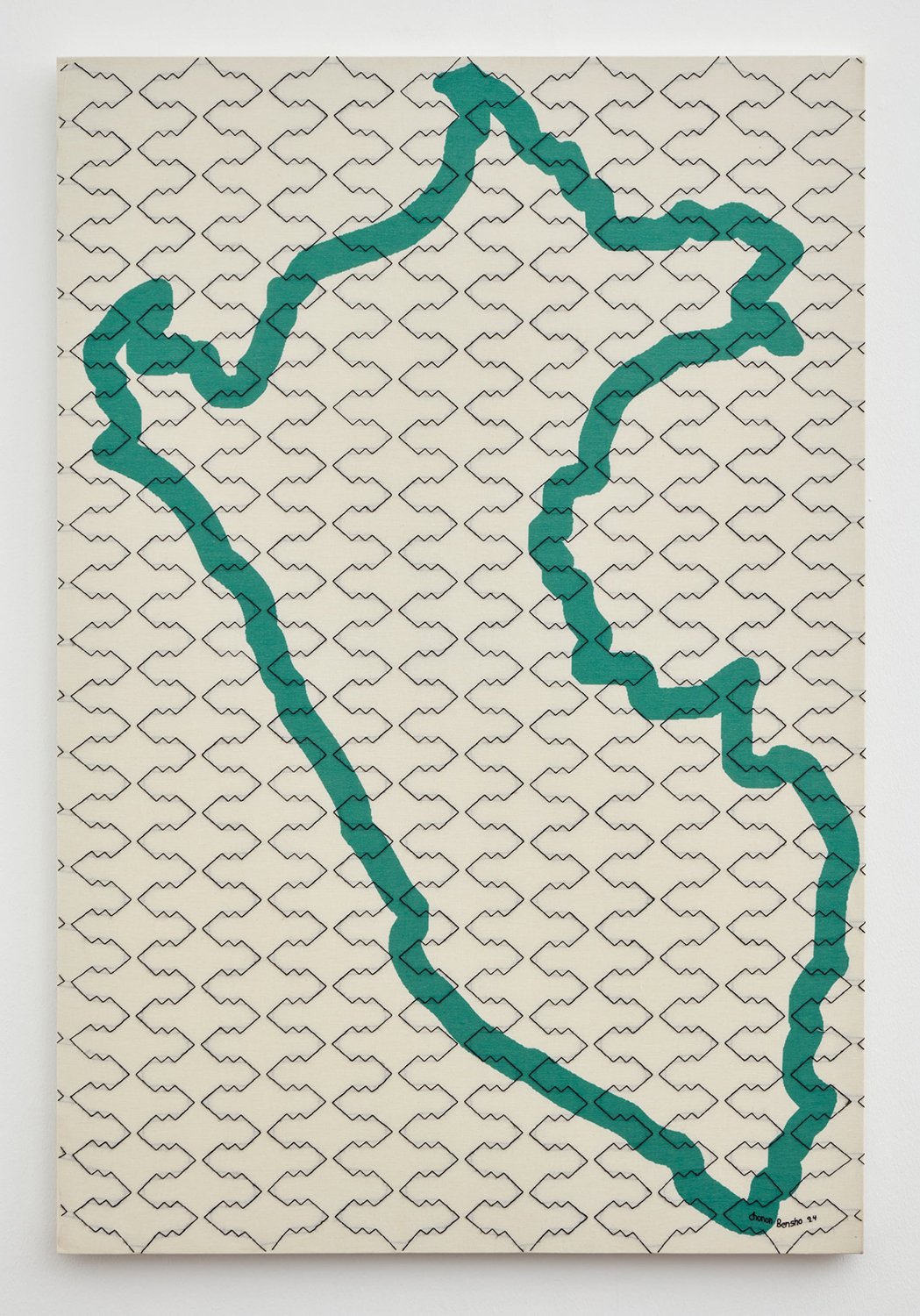
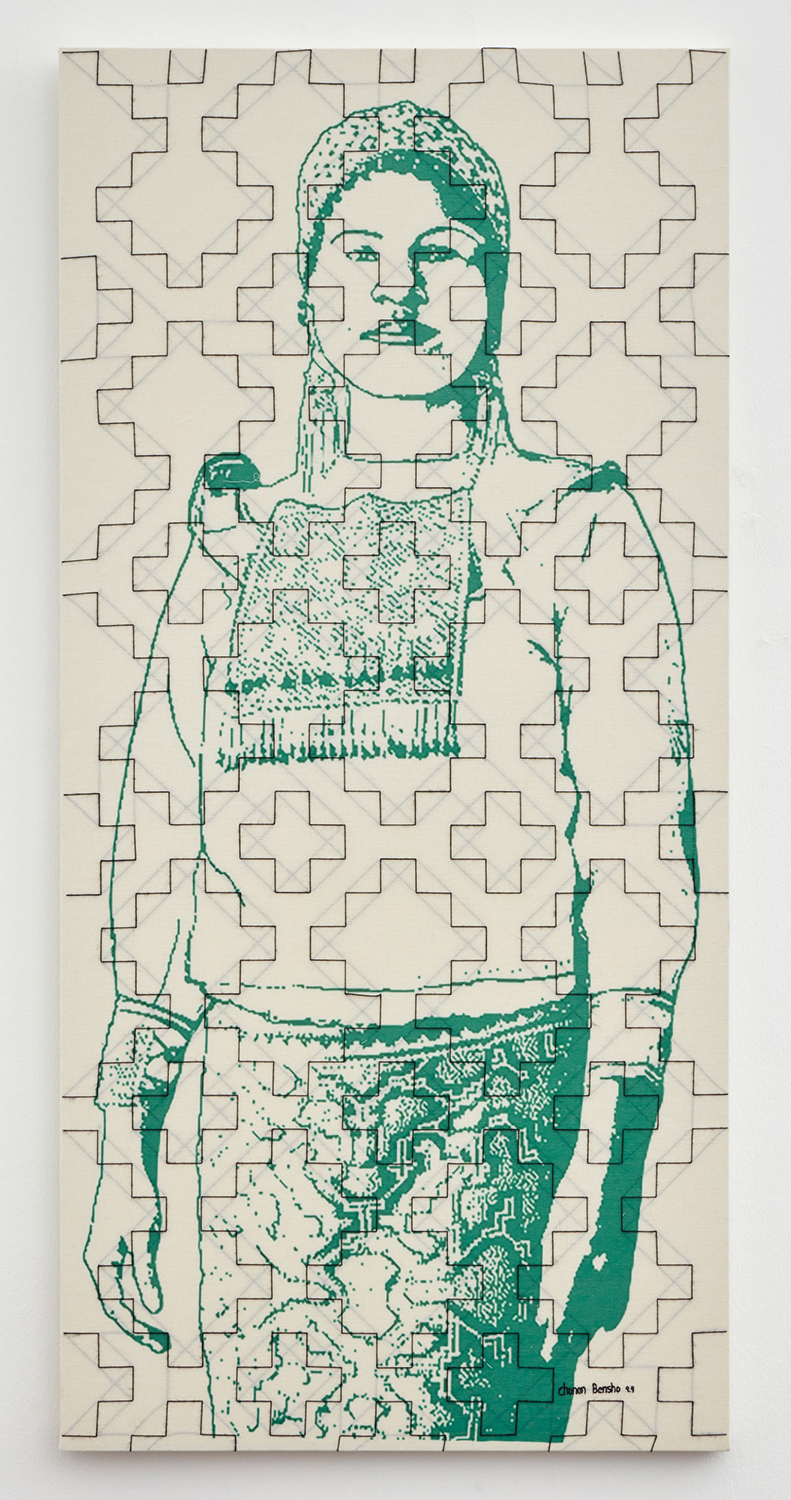
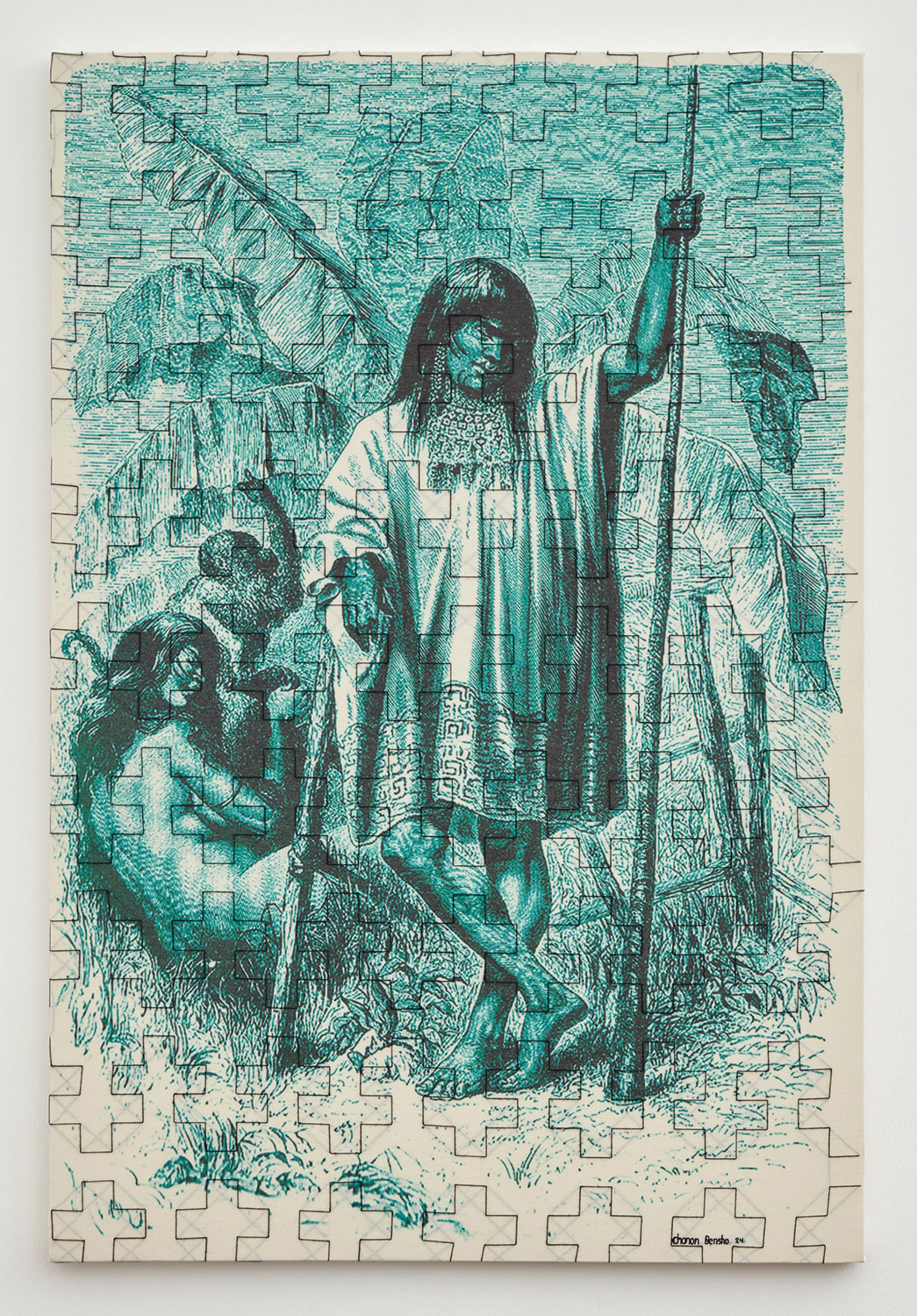
Chonon Bensho
Chonon Bensho (Pucallpa, 1992) is a multimedia artist and poet from the Shipibo-Konibo People of the Peruvian Amazon. Her work involves both an exploration and a revitalization of the ancestral tradition of Kené, an artistic style of the Shipibo Konibo community, characterized by abstract patterns of intricate exactness that create an overall image of vibratory power.
The Kené designs are inspired by the visions generated by the ingestion of entheogenic plants, such as ayahuasca. These pattern visions are an essential aspect of healing rituals. Thus, the designs made on a material support are also said to have healing powers. Traditionally, “making Kené”, that is, painting, embroidering or weaving designs, is a feminine art inherited from mother to daughter, which uses materials derived from the Amazon forest and can be reproduced on the body, clothing, ceramics, wood, among other surfaces. Descended from a long lineage of female artists and visionary healers, Bensho learned the indigenous cosmology contained in Kené long before attending art school, from which she graduated in 2018, managing to merge her indigenous heritage and the tradition of Western Fine Arts in a unique formal universe.
The Kené designs are inspired by the visions generated by the ingestion of entheogenic plants, such as ayahuasca. These pattern visions are an essential aspect of healing rituals. Thus, the designs made on a material support are also said to have healing powers. Traditionally, “making Kené”, that is, painting, embroidering or weaving designs, is a feminine art inherited from mother to daughter, which uses materials derived from the Amazon forest and can be reproduced on the body, clothing, ceramics, wood, among other surfaces. Descended from a long lineage of female artists and visionary healers, Bensho learned the indigenous cosmology contained in Kené long before attending art school, from which she graduated in 2018, managing to merge her indigenous heritage and the tradition of Western Fine Arts in a unique formal universe.
Chonon Bensho
Chonon Bensho (Pucallpa, 1992) is a multimedia artist and poet from the Shipibo-Konibo People of the Peruvian Amazon. Her work involves both an exploration and a revitalization of the ancestral tradition of Kené, an artistic style of the Shipibo Konibo community, characterized by abstract patterns of intricate exactness that create an overall image of vibratory power.
The Kené designs are inspired by the visions generated by the ingestion of entheogenic plants, such as ayahuasca. These pattern visions are an essential aspect of healing rituals. Thus, the designs made on a material support are also said to have healing powers. Traditionally, “making Kené”, that is, painting, embroidering or weaving designs, is a feminine art inherited from mother to daughter, which uses materials derived from the Amazon forest and can be reproduced on the body, clothing, ceramics, wood, among other surfaces. Descended from a long lineage of female artists and visionary healers, Bensho learned the indigenous cosmology contained in Kené long before attending art school, from which she graduated in 2018, managing to merge her indigenous heritage and the tradition of Western Fine Arts in a unique formal universe.
In Bensho’s hands, Kené becomes a tool to create large embroidered canvases that recreate images that elegantly and mystically express the harmonious coexistence between humans and the Amazonian environment. Thus, mythological beings, animals and plants are shaepd or traced through kene, functioning as a metaphor for the inseparability between all living beings in Shipibo Konibo culture.
Chonon Bensho won the 2022 Painting Award of the National Reserve Bank of Peru, being the first Indigenous woman to be recognized with the prize, considered the most important in Peru. Her most recent solo exhibitions include “Metsá Nete: the beautiful visionary world of Chonon Bensho” at the Alliance Française in Lima, Peru, curated by Christian Bendayán; and “A River, a Snake, a Map in the Sky”, in Basel, Switzerland, curated by Kateryna Botanova as part of the Culture Scapes Art Festival.
Her work is currently part of the MASP collection in Sao Paulo and MALI collection in Lima.
The Kené designs are inspired by the visions generated by the ingestion of entheogenic plants, such as ayahuasca. These pattern visions are an essential aspect of healing rituals. Thus, the designs made on a material support are also said to have healing powers. Traditionally, “making Kené”, that is, painting, embroidering or weaving designs, is a feminine art inherited from mother to daughter, which uses materials derived from the Amazon forest and can be reproduced on the body, clothing, ceramics, wood, among other surfaces. Descended from a long lineage of female artists and visionary healers, Bensho learned the indigenous cosmology contained in Kené long before attending art school, from which she graduated in 2018, managing to merge her indigenous heritage and the tradition of Western Fine Arts in a unique formal universe.
In Bensho’s hands, Kené becomes a tool to create large embroidered canvases that recreate images that elegantly and mystically express the harmonious coexistence between humans and the Amazonian environment. Thus, mythological beings, animals and plants are shaepd or traced through kene, functioning as a metaphor for the inseparability between all living beings in Shipibo Konibo culture.
Chonon Bensho won the 2022 Painting Award of the National Reserve Bank of Peru, being the first Indigenous woman to be recognized with the prize, considered the most important in Peru. Her most recent solo exhibitions include “Metsá Nete: the beautiful visionary world of Chonon Bensho” at the Alliance Française in Lima, Peru, curated by Christian Bendayán; and “A River, a Snake, a Map in the Sky”, in Basel, Switzerland, curated by Kateryna Botanova as part of the Culture Scapes Art Festival.
Her work is currently part of the MASP collection in Sao Paulo and MALI collection in Lima.


“Merayanin incanto (the stone with spiritual strength of the wise man)”, 2025
155 x 118.5 cm
Embroidery on fabric










“Eariki (Green Document of Identity)”, 2024
137 x 151 cm
Screen prints on fabric with embroidery



